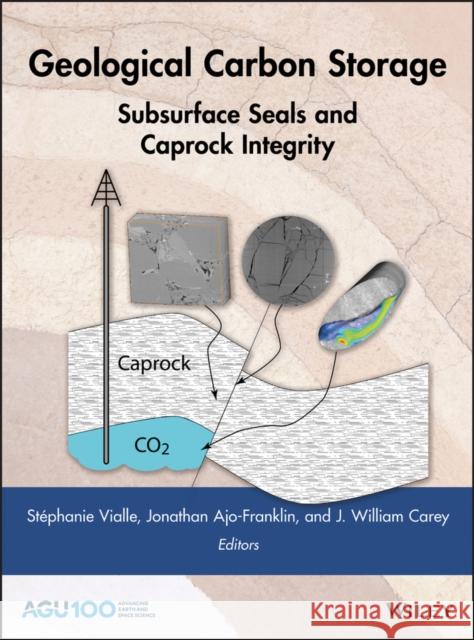Geological Carbon Storage: Subsurface Seals and Caprock Integrity » książka
Geological Carbon Storage: Subsurface Seals and Caprock Integrity
ISBN-13: 9781119118640 / Angielski / Twarda / 2018 / 364 str.
Seals or caprocks are an essential component of subsurface hydrogeological systems, guiding the migration of hydrocarbons and trapping them over geological time scales. These sealing properties are achieved by the fact these rocks have pore sizes on the order of a few micrometers to a few nanometers which makes their permeability extremely low, on the order of a few nano-Darcy. These rock formations are crucial to current technologies like underground geological carbon sequestration that requires a secure site to store and contain CO2 in a high porosity, high permeability reservoir (e.g. saline formation or depleted oil & gas reservoir), and prevent its upward migration with low-permeability caps. This monograph will deal with 'tight rocks' or low-permeability formations that can act as seals, regardless of their mineralogy and will thus encompass a broad range of rock types such as mudstones, shales (clay mineral-rich rocks), anhydrites, and tight carbonates (dolomite and marls). These rocks share a common characteristic which is their extremely low permeability resulting from their nanosize pores; they will however exhibit a variety of geochemical and geomechanical behavior due to the different nature of their forming minerals: for example rock formations rich in brittle minerals such as carbonates or quartz will tend to fracture under certain conditions while the ones rich in ductile materials like clay minerals will not, under the same conditions; carbonate minerals will be chemically more reactive than silicates. Although sealing rock formations have been studied for decades, interest from the Oil & and Gas industry has historically been drawn towards the underlying reservoir rock formations, sandstones and limestones from which hydrocarbons are produced. With the current need to find safe storage sites for various wastes (CO2, nuclear wastes etc.) and the possibility for some of the tight rocks to act as a source rocks, it is essential to improve our understanding of these formations. One of the first challenges we are facing today is to be able to understand fluid migration and reactions occur within a system in which the pore size are only of a few nanometers. The first section of the monograph will thus cover the hydrogeochemical and petrophysical properties of tight rocks, and some chapters will present the current knowledge on the understanding of flow and transport in these rocks as well as how the new imaging techniques that have emerged these past few years allowed unprecedented 3D view inside the pore system at the nanoscale. The second section will address the geochemical and mechanical responses of the caprocks that can compromise the security of carbon storage. The first chapters will cover the fundamentals on fracture generation, self-healing and permeability. The rest of the chapters will deal with coupled hydrogeochemical and mechanical processes, through both experimental and modeling work. The third section will move on to techniques for monitoring caprock failure and integrity. For secure storage of CO2, it is indeed required to be able to rapidly detect any unwanted migration or leak in the subsurface. Fractures, either pre-existing or created during the site operations, are usually below the seismic resolution of the geophysical surveys: development of new or adapted geophysical and/or geochemical monitoring techniques are thus needed. Last, the fourth section will address potential environmental impacts, e.g. groundwater quality or seafloor life, of potential CO2 migration as well as some examples of promising mitigation and remediation strategies.











